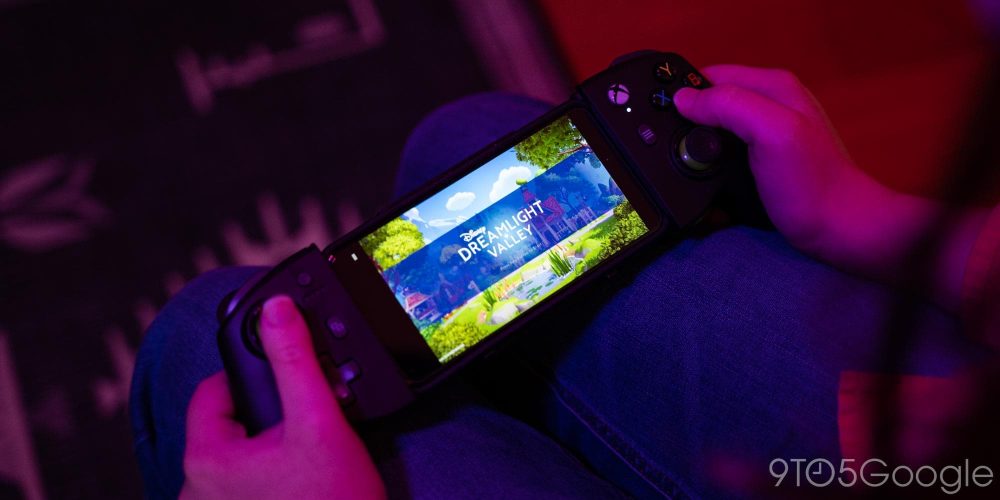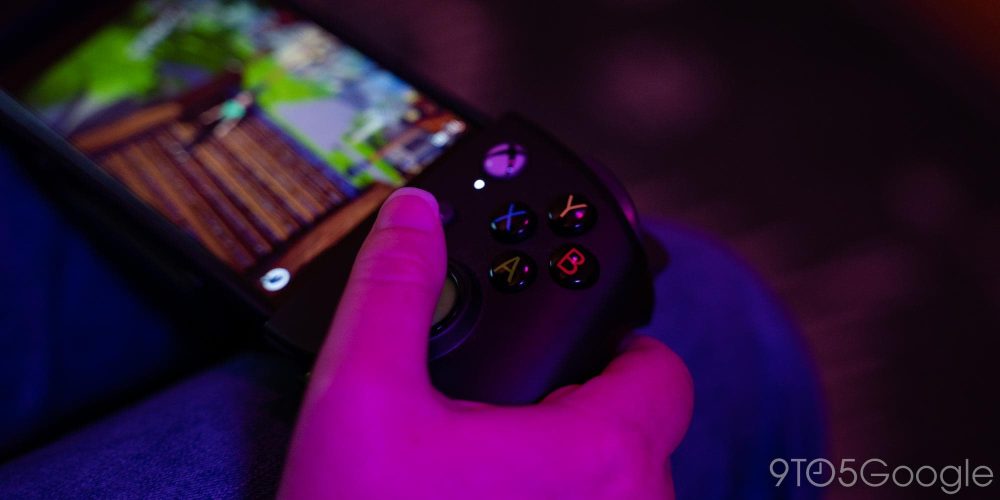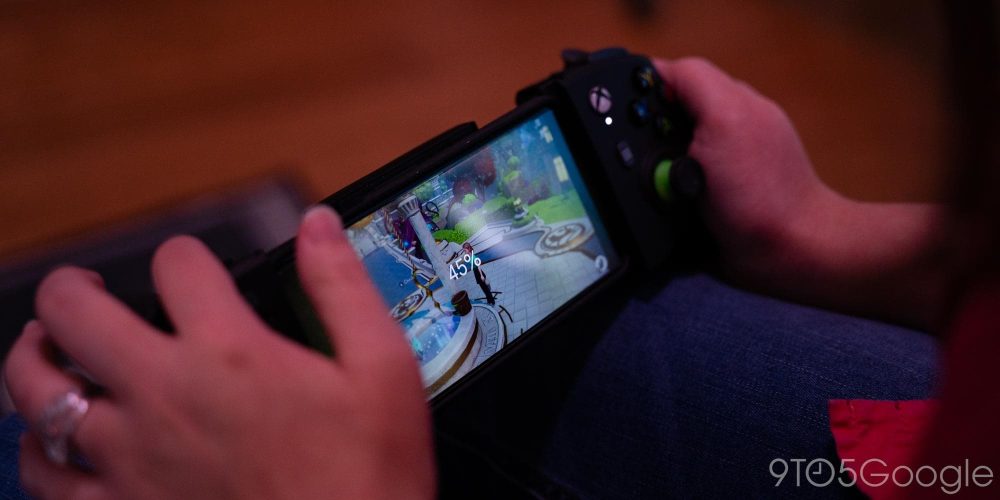[ad_1]
With the rise of cloud gaming has come a new focus on game controllers for smartphones, and there have been some unique ideas. From cooling fans to compact sizes, there’s something for everyone. For the Xbox Game Pass player, the Moga XP7-X Plus might just be the ultimate gaming controller, but one element leaves it behind.
Moga XP7-X Plus: The good
Comfortable controls
The biggest perks of the Moga XP7-X Plus are, without a doubt, its controls and ergonomics. The controller feels a lot like a superwide Xbox controller in the hand, and the layout is comfortable! Buttons are easy to click and have tactile feedback, while the triggers and shoulder buttons are quiet.
The triggers especially are unique to this space. Generally, this split design means giving up real, resistive triggers for glorified buttons. But here, you’ll get triggers that actually press in. I found the resistance here a little too stiff for my liking, but it’s been solid, nonetheless, for the various games I’ve played across Stadia and Xbox Game Pass. My wife also seemed to enjoy them overall while playing Dreamlight Valley on Game Pass.

Elsewhere, the D-pad and joysticks are also quite solid, with the former having a quiet press with solid travel and the latter with no sign of drift but with responsive movements. This is far from the best setup I’ve felt, but it’s certainly one of the better mobile options I’ve tried in recent memory.


Perhaps my only issue with the controls is that some of the options for power are hard to keep track of. Around the top and bottom of the controller, you’ll find a power switch, Bluetooth button, green button, and a switch for Bluetooth and USB – you can use this controller wired with a PC when this switch is flipped. But, somewhat annoyingly, none of these actually turn on the controller. Rather, the Xbox button on the front does that. It defeats logic a bit, in my opinion, but this is something that can be easily overlooked. What does that green button do? With an app, it can be programmed to whatever you choose, but out of the box, it does nothing. There are also remappable buttons on the back of the controller – always nice to see.
Once paired, I found that the Moga XP7-X Plus runs just about as well as any other Bluetooth controller. Input lag is to a minimum, barely noticeable if at all when the controller is being used wirelessly. Battery life is manageable, and I never killed it in a single gaming session, but there’s a bit of a catch to that.
Wireless charging is a neat perk of dubious value
This last feature slots itself into the “pro” column for me, but it could easily be seen as a “con” too. Using the juice from the internal 2,000 mAh battery, you can activate wireless charging using the Qi standard on this controller. Your phone will immediately start charging, no wires needed.

In practice, this works rather well. With a Pixel 6 Pro and a Pixel 5, charging was recognized immediately, and both devices got a decent boost from that internal charger. I did notice, though, that my Galaxy Z Fold 3 and my Fold 4 both had trouble lining up with this charging pad, making the feature more of a headache than a value add.
For cloud gaming, this is a great addition, but wireless charging seems like a bad idea for local gaming. Even mobile games can quickly heat up a smartphone, and the added heat of Qi charging is a recipe for thermal throttling or even overheating. I’d have loved to see a fan added to combat this, but no such option is available. If you’re planning to buy this controller for local gaming, I wouldn’t recommend using Qi.
The biggest problem I had with this feature was down to how it affects battery life. Put simply, it can easily kill the controller if you’re not careful. Qi is inefficient, so charging will use more power than a direct USB connection would. But further, the “power bank” works independently of the rest of the controller. If you disconnect the controller, the power bank will stay on, even if there’s nothing on the controller. This is a cool idea in theory for using the controller as a portable power bank, but more times than not, it just resulted in me sitting down to play games and finding that the Moga was dead. Besides, the hardware here is way too bulky for it to be a convenient travel option.
On the whole, wireless charging is something that I really liked about this controller, but it could have been better implemented, and it’s definitely not for everyone.

Moga XP7-X Plus: The bad
Big phones and cases are a tight fit
Despite the XP7-X Plus being a big and bulky mobile controller, it’s still a tight fit for modern flagship phones. The Pixel 6 Pro barely fits in the controller’s smartphone slot when it has the relatively thin official case installed. The Galaxy S22 Ultra is also a tight fit in this space, both in terms of width and thickness. The Galaxy Z Fold 4 fairs better in thickness but is the absolute maximum width this controller can handle.

This is a bit of a shame as, in 2022, most phones are pretty huge. Plus, bigger phones make for a better mobile gaming experience. It really feels as if PowerA wasn’t thinking of modern phones when designing this controller.
Speaking of…
It’s 2022 and this uses micro USB
The thing I just can’t look past on this controller is that it charges over micro USB. This, a $100 product released in the year 2022, is using a charging standard that smartphones largely ditched five to six years ago.
Charging over micro USB would have been an annoyance a few years ago, but in 2022, it’s an active hindrance to the customer that this controller is going after. I think it’s a rather safe bet that most people looking to buy a $100 controller also largely own devices using USB-C, and as such, don’t have micro USB cables just lying around anymore. The Moga XP7-X Plus does include a cable in the box for charging, but it’s of dubious quality and too short to be useful in a lot of instances.

The logic behind this choice simply baffles me. Virtually every smartphone at this point, regardless of price, uses a USB-C port – unless it’s an iPhone, of course. But even with that in mind, I’d argue that someone with an iPhone is still more likely to have a USB-C charger around instead of one with micro USB, if only because the iPad, MacBook, and the aforementioned plethora of smartphone accessories on the market today almost exclusively use USB-C as well.
There’s simply no excuse for this.
There’s a lot to love about the XP7-X Plus, but personally, I just can’t overlook its charging method. The battery life isn’t good enough for it to be an afterthought, and smartphones in 2022 simply do not use this archaic standard. Despite the solid controls, clever charging, and the fairly reasonable $99 price point, micro USB just makes this product an inconvenience.
If you’re still interested in the Moga XP7-X Plus, despite the charging method, you can pick it up on Amazon for $99.
More on Cloud Gaming:
FTC: We use income earning auto affiliate links. More.
Check out 9to5Google on YouTube for more news:
[ad_2]